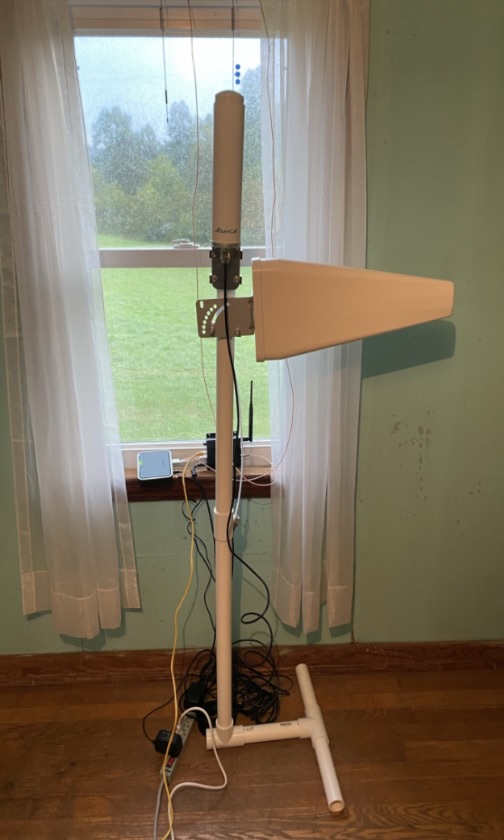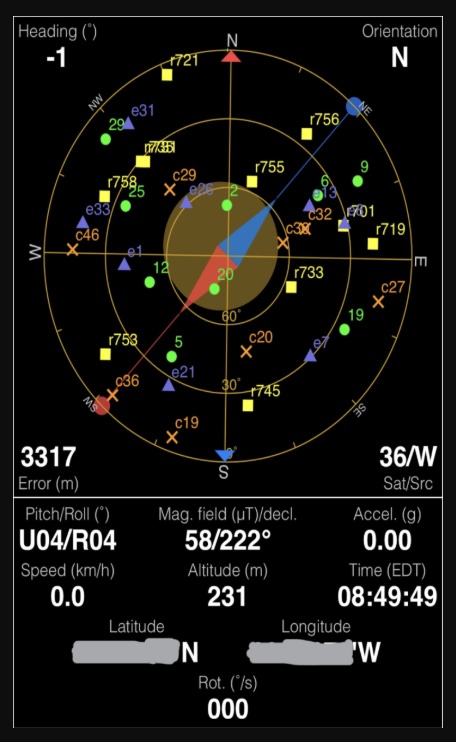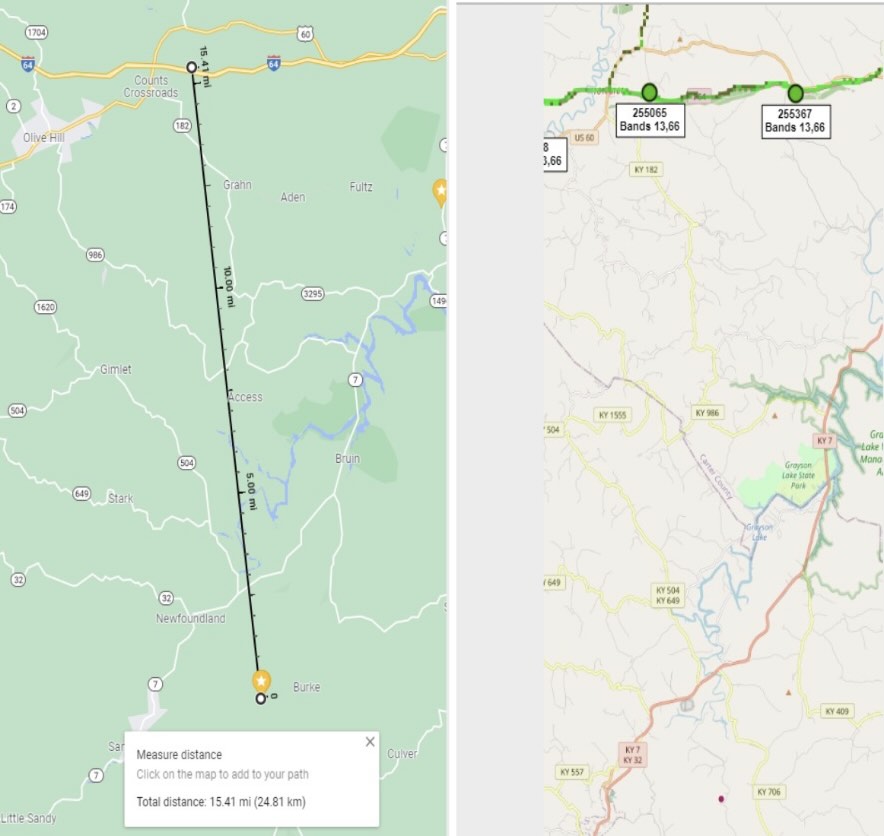In our business, even before the pandemic, we’ve been helping customers find ways to work remotely. As an experiment I wanted to test this out for myself. So, I took a week trip to our family farmhouse in Isonville, KY. This is in a remote area with lots of hills and little to no cellular reception. In the recent past we have been able to achieve a better signal, though it usually teeters around one bar, if we are lucky!
Knowing the challenge of getting a good enough cellular signal – and that I would need to be able to maintain VoIP calls and load webpages and videos correctly – I decided to go with two styles of antennas. One would be an outdoor omni-directional antenna and the other would be an outdoor high gain Yagi antenna. The Omni-directional antenna I went with was a SureCall Ultra-Wideband LTE/5G Antenna. The Yagi antenna was a SureCall Ultra Wide Band Outdoor Yagi Antenna.
I also decided since this would be a test for future use, I wanted to do a temporary setup. I bought some standard 2 foot length 1.25 inch PVC tubing from the local hardware store and a few fittings to fashion a temporary mounting pole in the upstairs room of the farmhouse. The Peplink router I used was a Pepwave MAX BR1 Mini LTE-A.


Armed with my Pepwave Max BR1 Mini, the antennas and the PVC I went to work on getting the antennas mounted and aligned for the best signal acquisition I could obtain. I used the data from cell mapper to get an idea of where I needed to aim the Surecall Wide-Band Yagi Antenna and an app on my phone (which I use when I go hiking) called GPS Status (iOS Link | Android Link) to aim the antenna precisely.
Using the stock antennas on the Pepwave Max BR1 Mini on the second floor I had a signal value of -119dBm, and this is a horrible signal to be sure. After connecting the omni-directional antenna to Cellular Main and the Surecall Wide-Band Yagi Antenna to Cellular Diversity I was able to acquire a signal value of -73dBm. This was a HUGE improvement. I ran a speed test with the stock antennas, and I was only able to get about 4.5Mbps down and 0.4Mbps up. With the antennas in place, I was able to get 19.8Mbps down and 8.7Mbps up. This was about 15.5 miles to the nearest tower from the farmhouse.

As another test I decided to try and use my old cellular router, a Netgear LB1120. This is what I had used prior to receiving the Pepwave Max BR1 Mini. With the stock antennas I had absolutely no signal. With the SureCall Wide-Band Yagi antenna, I aimed it at the one and only cellular tower that had the band it supported in the area (Band 4.) The result was staggering, to say the least. I went from no signal to a signal of -89dBm. Now while that doesn’t sound like a huge improvement, let me explain why this result was so jaw dropping. The tower I was connected to was just shy of 24 miles away!


My results with these antennas have given me the ability to have a future permanent setup at a very remote rural location that I can reliably work from. With a relatively low budget. I know that other people in “Rural America” have this exact same issue with not being able to get steady service in an area that is usually not serviceable. My results are a testament to how well these antennas perform.
You can check out the products we used (just with longer cables) at the following link: https://5gstore.com/cart/33660
If you have any questions please give us a call and we will be happy to assist you Monday – Friday 9am to 6pm CST (833) 547-8673.
Tests performed and addressed in this article were done, and details written by David W. with the 5Gstore team.

